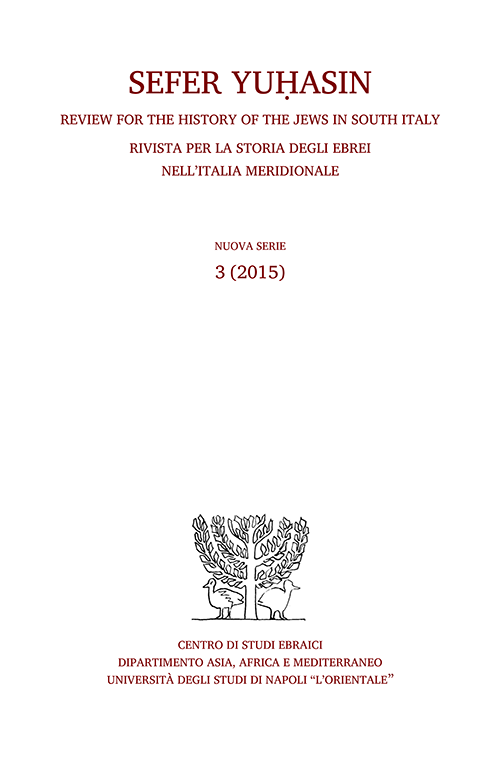Sul termine anbūrlāk nel Ms. Vat. Ebr. 411 in giudeo-arabo di Sicilia
DOI:
https://doi.org/10.6092/2281-6062/5559Abstract
A Note on the Term anbūrlāk in the Vatican Ms. Ebr. 411 in Judeo-Arabic of Sicily
The obscure term anbūrlāk is found in a poem in Judeo-Arabic from the Vatican Ms. Heb. 411, first published in 1949 by E. Mainz, who related these poems to North African Judeo-Arabic dialects. G. Wettinger convincingly argued, in some later works, that the dialect of the poems was closer to Maltese or to the Judeo-Arabic of Sicily. He also correctly identified the term anbūrlāk with the imborlachu found in many notarial archive documents from Sicily, dating to the 14th-15th centuries and explained by H. Bresc as being the canopy of a bed. In the present work, some illustrative occurrences of the term in Medieval Sicilian sources are given, and it is conjectured that the term imborlachium could be based on the Romance word borla, ‘tassel’. The suggestion is therefore posited that the term may have originally indicated just the trimmings and tassels decorating the drapes, and only later on did the meaning extend to the whole canopy. A new reading and translation of the verse is provided, and a transcription of the entire Judeo-Arabic poem in Hebrew vocalized script, as found in the Ms., is published here for the first time.
Downloads
Downloads
Published
How to Cite
Issue
Section
License
Gli autori che pubblicano su questa rivista accettano le seguenti condizioni:
- Gli autori mantengono i diritti sulla loro opera e cedono alla rivista il diritto di prima pubblicazione dell'opera, contemporaneamente licenziata sotto una Licenza Creative Commons - Attribuzione che permette ad altri di condividere l'opera indicando la paternità intellettuale e la prima pubblicazione su questa rivista.
- Gli autori possono aderire ad altri accordi di licenza non esclusiva per la distribuzione della versione dell'opera pubblicata (es. depositarla in un archivio istituzionale o pubblicarla in una monografia), a patto di indicare che la prima pubblicazione è avvenuta su questa rivista.
- Gli autori possono diffondere la loro opera online (es. in repository istituzionali o nel loro sito web) prima e durante il processo di submission, poiché può portare a scambi produttivi e aumentare le citazioni dell'opera pubblicata (Vedi The Effect of Open Access).


